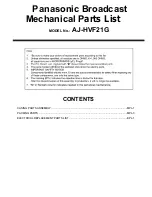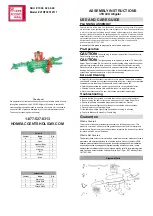
SM3BAT User Guide
Developing Custom Programs
page
43
BIOACOUSTIC MONITORING SYSTEMS
contrast, zero crossing mode measures the time between transitions of the
signal between positive and negative values relative to some sensitivity
threshold. Zero crossing has advantages including significantly lower power
consumption and memory card storage requirements. However, zero
crossing representations of bat calls lack information about the changing
amplitude and harmonic structure of the underlying signal. It is possible to
convert from full spectrum to zero crossing by removing information from
the signal, but it is not possible to convert from zero crossing back to full
spectrum.
During the scheduled recording period, SM3BAT will create zero crossing
sequence files for each trigger. The SM3BAT assesses each sequence to
verify that it is a bat pass and not a non-bat trigger. The resultant files can
be opened directly and analyzed with Wildlife Acoustics’ Kaleidoscope
software or third party zero-crossing software.
The length of file is defined by length of activity and
TRGWIN
setting or a
maximum length of 15 seconds.
Channel
AUTO
setting behavior:
■
One SMM-U1 ultrasonic microphone on channel 0: 0
■
One SMM-U1 ultrasonic microphone on channel 1: 1
■
Two SMM-U1 ultrasonic microphones: 0+1
■
No attached SMM-U1 ultrasonic microphones: OFF
FRQMIN <freq-channel-0> <freq-channel-1>
Specifies the lower bound for the frequencies of interest to the scrubber
and the triggering mechanism. Values are 1 kHz – 192 kHz in 1-kHz steps,
or
OFF
Echolocations or other signals occurring below this frequency will not cause
a trigger and will be consider noise to the scrubber mechanism. A setting of
16kHz works well for most bat applications but it may be necessary to set
lower if lower frequency species are to be recorded.
This command is only relevant if
TRGLVL
is not
OFF
.
See
DMIN
for more information on how the scrubber uses this value.
See
TRGLVL
for more information on how the trigger uses this value.
FRQMAX <freq-channel-0> <freq-channel-1>
Specifies the upper bound for the frequencies of interest to the scrubber
and the triggering mechanism. Values are 1 kHz – 192 kHz in 1-kHz steps,
or
OFF
.
Echolocations or other signals occurring above this frequency do not cause
a trigger and are considered noise to the scrubber mechanism. 192khz is
recommended for recording bats.
Summary of Contents for sm3bat
Page 6: ......
Page 71: ...SM3BAT User Guide SM3BAT Specifications page 65 BIOACOUSTIC MONITORING SYSTEMS ...
Page 75: ...SM3BAT User Guide SM3BAT Specifications page 69 BIOACOUSTIC MONITORING SYSTEMS ...
Page 76: ...SM3BAT Specifications SM3BAT User Guide page 70 BIOACOUSTIC MONITORING SYSTEMS ...
Page 77: ...SM3BAT User Guide SM3BAT Specifications page 71 BIOACOUSTIC MONITORING SYSTEMS ...
















































